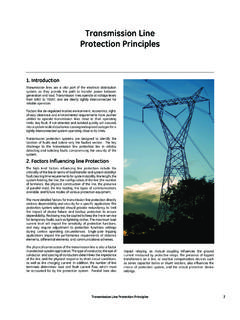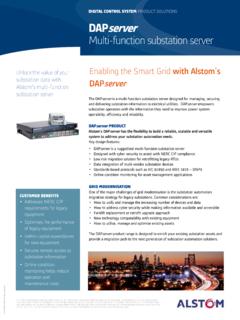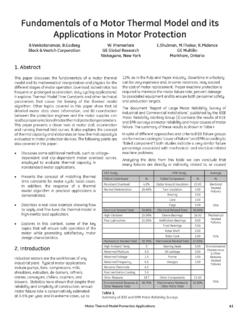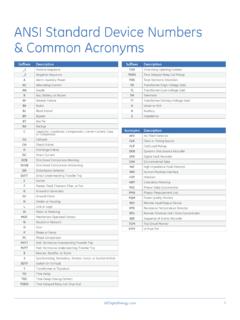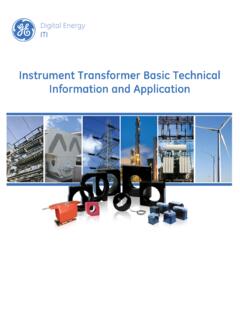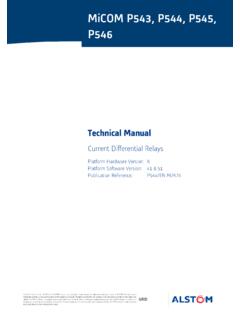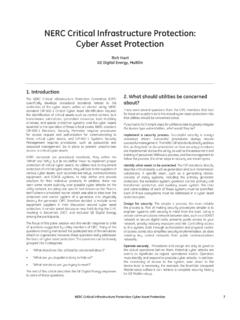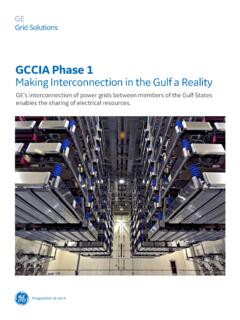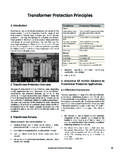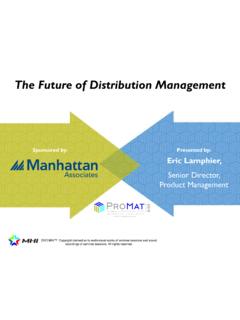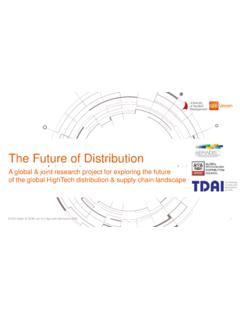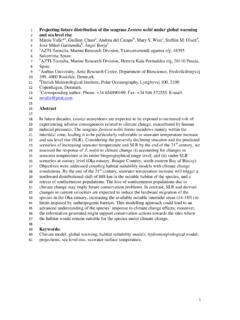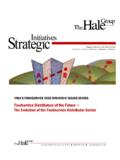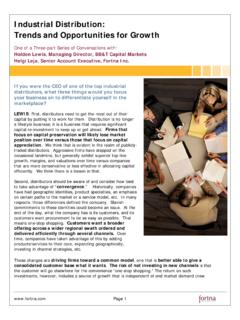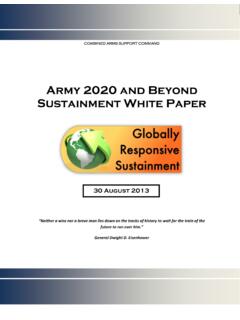Transcription of Power electronics and the future of distribution networks
1 18 Alstom Grid///Summer 2010 Functionalities of active networks400 V10-100 kV150 + kV AsynchronousinterconnectionCustomisedint erfaceRES interfaceRES interfaceD-STATCOMFast car chargerCar chargerElectronic transformerSeries powerflow controllerSeries powerflow controllerElectronictransformerMAIN FEATURE CHAPTER I RESEARCH WITH AN EYE ON THE FUTURES ince the 1980s, Power electronics have found any number of applications, from improving network characteristics where heavy industries connect to weak grids, to and high voltage DC transmission. However, for now, they are largely absent from electri-cal distribution systems, due in part to the traditional configuration based on large, remote Power plants. Not so in the future , and Collaborative Development, Alstom Grid Research and Technology Centre in Stafford, Renewable sources have very aggres- Power electronics and the future of distribution networksGreener may just be meaner, at least on the distribution grid.
2 Stochastic renewable sources and increased electrical consumption will require solutions for maintaining service levels, voltage quality and system availability. This is a job for Power UBIQUITY OF Power electronics Alstom Grid///Summer 2010 19 StorageinterfaceMulti-terminalDC distribution100 percent in a short period of time. And electric vehicles and electric heating, con-sequences of energy systems becoming greener, will be demanding on the grid. As a result, Power electronics will necessarily be part of future solutions to operate the distribution network, maintain voltage pro- The push to Power electronics future distribution systems will need -age, Favre-Perrod says. This means inter-vening with a current or voltage source. electric loads, the sine wave will look even less like a sine wave, quality will suffer, and there, too, you will need a current or voltage source. Power electronic converters can provide solutions, as they are all basically disguised voltage and current sources, although each one has entirely different goals and technical characteristics.
3 -faces. All these new distributed energy sources generate DC or variable AC that will need transformation. New consumers, vehicles and urban transportation systems will need customized plug and play inter-faces. Power electronics can also be used networks less need for new lines that nobody wants and substations where no space is available and to interconnect systems. They can provide enhanced coor- line loading. Power electronics solutionsSo, Power electronics solutions will take on a whole variety of forms. Some of these devices, such as electronic low and medium voltage transformers, are maybe 10 years away. Others are currently being developed from technologies already available on transmission systems. D-FACTS could enhance controllability and increase Power transfer capability. Static synchronous com- farms with the fast dynamic reactive Power support. A European Commission-funded project called ADINE, which is focused on active distribution network management, distribution .
4 Could regulate the impact of wave or wind generation on potentially weak distribution networks , in addition to providing direct and multi-terminal DC can become pos- technology, and such solutions will prob- Favre-Perrod. For that matter, Alstom Grid is currently participating in a collaborative project that aims at demonstrating key features such as protection systems, includ-ing circuit breakers. Other applications are already available either in inadequate form commercially available plug-in vehicle chargers do not yet perform at appropriate levels or as standalone solutions: storage and distrib- -ized interfaces for harbors, factories, airports maintain voltage wave new approach Once you do one of these applications with emerging technology, it Power electronics converters and transformers will their way into distribution networks to control voltage as a whole range of new applications are introduced.
5 These can include urban transportation systems, but also electric vehicles and new, cleaner heating Alstom Grid///Summer 2010 MAIN FEATURE CHAPTER I RESEARCH WITH AN EYE ON THE future becomes easier to do the others, and we may have a platform approach in the future . In the past, each issue was addressed individually, but now we are looking at converters with smart designs that can do several things at a time, so you get more at low incremental cost, recently completed three-year, research project UNIFLEX demonstrated although cost and performance are not there yet. The idea is to create versatility, but also devices are often tailored to specific proj-ects, which means long design times, UNIFLEX AC/AC FULL CONVERTER UNIT FACTS are a scalable concept used primarily in transmission systems, but will be needed for distribution in the future , says Patrick Favre-Perrod. In ~ same theoretical framework with three categories: series compensation, shunt compensation, and combined.
6 In series compensation, the Power system connects to the FACTS in series and works as a controllable voltage source, while in shunt compensation, the connection is parallel and works as a controllable current source. The choice of shunt ( , D-STATCOM) or series ( , SSSC) or a combination ( , DVR, UPFC) will depend on grid requirements. Basically, what you can do with a shunt device such as a static VAR compensator (SVC), you can also do with a series device such as a thyristor-controlled series reactor (TCSR), but you always opt for lowest cost for best performance. Series devices are used for }~ and oscillation damping while shunt devices work best for Power quality, reactive Power compensation and voltage support. And since the world is not black and white, sometimes you need both. MOREP atrick Favre-Perroddifficult implementation and a lot of test-ing. Advances in Power electronic switches will enable converters that, like Lego toys, can be put together to get twice the output.
7 Other key factors for future grids include interoperability. The quest has begun to simplify connections of, say, renewable generators, with standardized technical solutions and eventually a plug-and-play approach. Coordinating actions across the system is also key, so each device knows what to do to contribute to the overall balance. If you have a small STAT- adjusts its output accordingly, that is like having one citizen who cannot alone change the president: it will not change the overall situation. But if several devices are coordinated, you multiply the effect, like several citizens voting for a new gov-ernment, and you impact the entire sys-tem. So you need to tell each device what to do. This can open the way to pools of small distributed generators acting as virtual Power , Power electronics are at a real turning point, with a whole new philoso-phy and approach. They are poised to play a major role as the need for new applica-tions combines with technical solutions to build a future that is greener and more sources.
8 POINTS OF COMPARISON
